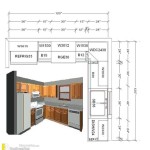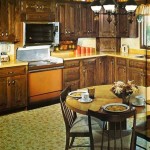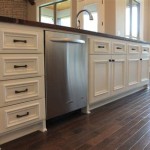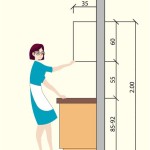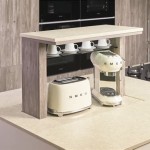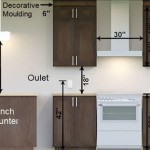Kitchen Cabinet Refacing Vs. Replacing: A Comprehensive Comparison
Kitchen renovations represent a significant investment in a home, often ranking among the most impactful projects in terms of both aesthetics and functionality. Within a kitchen remodel, the cabinets invariably command a substantial portion of the budget. Homeowners faced with outdated or worn kitchen cabinets confront a pivotal decision: whether to reface the existing structures or opt for a complete replacement. This article provides a detailed comparison of these two approaches, examining their respective advantages, disadvantages, costs, and suitability for various scenarios.
Kitchen cabinet refacing involves replacing the visible surfaces of the cabinets – namely the doors, drawer fronts, and potentially the end panels – while retaining the existing cabinet boxes or frames. This process is often viewed as a less disruptive and more cost-effective alternative to a full cabinet replacement. Conversely, a full cabinet replacement entails removing the existing cabinets entirely and installing new units. This approach offers greater design flexibility and the opportunity to address any underlying structural issues.
The choice between refacing and replacing is not always straightforward and depends heavily on individual needs, budget constraints, and the condition of the existing cabinets. A careful evaluation of these factors is crucial to making an informed decision that aligns with the homeowner's goals for their kitchen renovation.
Cost Considerations: A Detailed Breakdown
Cost is often a primary driver in the decision-making process. Refacing generally presents a significantly lower upfront cost compared to a full cabinet replacement. This is primarily because refacing avoids the expense of purchasing entirely new cabinet boxes, which can constitute a major portion of the overall cabinet cost. Labor costs are also typically lower for refacing, as the process is less time-consuming and requires fewer specialized skills than a complete installation.
The actual cost of refacing can vary depending on several factors, including the size of the kitchen, the type of materials used for the new doors and drawer fronts (e.g., wood veneer, laminate, solid wood), and the complexity of the design. Customization options and the addition of new hardware can also influence the final price. Generally, homeowners can expect to save between 30% and 50% by refacing their cabinets instead of replacing them.
Cabinet replacement, on the other hand, presents a higher initial investment. The cost encompasses the price of the new cabinet boxes, doors, drawer fronts, hardware, and installation labor. The price of new cabinets can vary widely depending on the material (e.g., stock, semi-custom, custom), style, and finish. Installation costs will also depend on the complexity of the project, any necessary modifications to the kitchen layout, and the experience of the installer. Stock cabinets represent the lowest cost option, while custom cabinets offer the greatest flexibility but come with a premium price tag.
It is important to obtain multiple quotes from reputable contractors for both refacing and replacement to accurately assess the potential costs involved. Homeowners should ensure that the quotes include a detailed breakdown of all expenses, including materials, labor, and any potential additional charges.
Evaluating the Condition of Existing Cabinets
The structural integrity of the existing cabinet boxes is a critical factor in determining whether refacing is a viable option. Refacing is generally suitable when the cabinet boxes are in good condition, meaning they are sturdy, level, and free from significant damage, such as water damage, rot, or warping. If the boxes are structurally sound, refacing can provide a cost-effective way to update the appearance of the kitchen without the need for a full replacement.
However, if the cabinet boxes exhibit signs of structural problems, refacing may not be the most prudent choice. Attempting to reface damaged cabinets can be a temporary fix that ultimately leads to more significant issues down the line. In such cases, a full replacement is often the more sensible option, as it allows for the correction of any underlying structural problems and ensures the long-term stability and functionality of the cabinets.
A thorough inspection of the existing cabinets is essential before making a decision. This inspection should include checking for levelness, signs of water damage around sinks and dishwashers, and any evidence of insect infestation. If there are any doubts about the structural integrity of the cabinets, it is advisable to consult with a professional contractor or cabinetmaker for an expert assessment.
Even if the boxes are structurally sound, the layout of the existing cabinets should be also considered. If the existing layout is functional and meets the homeowner's needs, refacing can be a convenient way to update the look without altering the overall configuration. However, if a significant layout change is desired, or if the existing layout is inefficient or impractical, a full cabinet replacement may be necessary to achieve the desired outcome. Replacing cabinets allows for complete reconfiguration of the space.
Design Flexibility and Aesthetic Considerations
One of the primary advantages of a full cabinet replacement is the greater design flexibility it offers. When replacing cabinets, homeowners have virtually unlimited options for cabinet style, materials, finishes, and hardware. This allows for a complete transformation of the kitchen's aesthetic, reflecting the homeowner's personal style and preferences. Replacement enables altering the height of cabinets, adding islands or peninsulas, and customizing internal storage solutions.
With refacing, the design options are somewhat more limited, as the existing cabinet boxes dictate the overall configuration and size of the cabinets. While homeowners can choose from a wide range of door and drawer front styles and finishes, the underlying dimensions of the cabinets remain the same. This means that significant changes to the layout or cabinet height are not possible with refacing.
However, refacing can still provide a significant aesthetic upgrade. By selecting new doors, drawer fronts, and hardware that complement the existing kitchen décor, homeowners can achieve a fresh and updated look without the expense and disruption of a full replacement. Refacing is particularly well-suited for homeowners who are satisfied with the existing layout and simply want to modernize the cabinets' appearance. In addition, certain modifications can be made during the refacing process. For example, fillers can be added to change the size of cabinets or to accommodate new appliances.
The choice between refacing and replacing also depends on the desired degree of customization. If the homeowner has specific design requirements or desires unique features such as custom-built storage solutions or integrated appliances, a full cabinet replacement offers greater scope for achieving these goals. Stock or semi-custom replacement cabinets offer a balance of customization and cost-effectiveness.
In summary, a full cabinet replacement offers greater design flexibility and customization options, while refacing provides a more cost-effective way to update the appearance of the kitchen without altering the existing layout or cabinet dimensions. The best choice depends on the homeowner's aesthetic goals, budget constraints, and the suitability of the existing cabinet configuration.
Ultimately, deciding between kitchen cabinet refacing and replacing requires careful consideration of cost, the condition of existing cabinets, and desired design flexibility. Homeowners should seek professional advice and compare quotes before making a decision.

Refinishing Vs Refacing Replacing Best Option For Your Cabinets

Cabinet Refacing Process And Cost Compared To Painting

Reface Or Replace Your Kitchen Cabinets

Refinishing Vs Refacing Replacing Best Option For Your Cabinets

Refinishing Vs Kitchen Refacing American Wood Reface

Cabinet Refacing Vs Painting Which Should You Choose

Cabinet Refacing Vs Painting Which Should You Choose

Painting Versus Refacing Reasons Why Kitchen Solvers Cabinet Makes Sense Franchise

Cabinet Refacing Vs Painting

Kitchen Cabinet Refacing Vs Replacing Bob Vila
Related Posts

